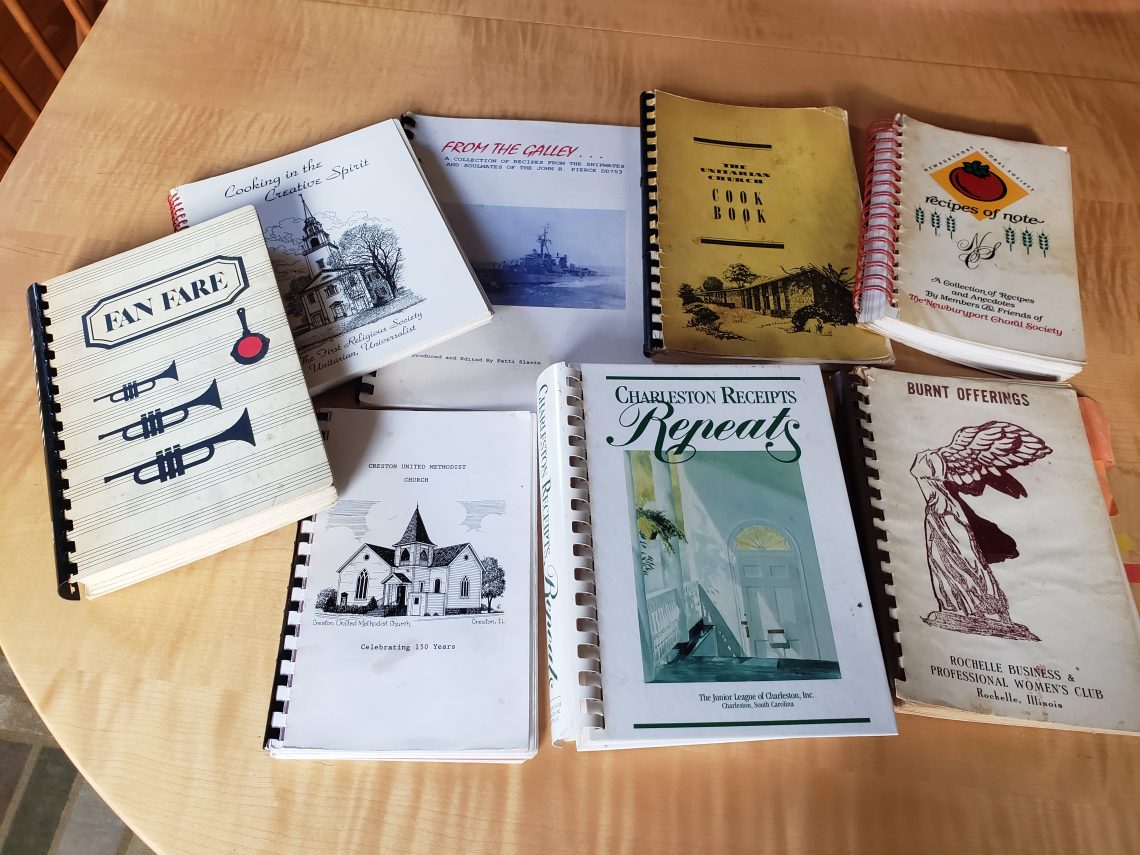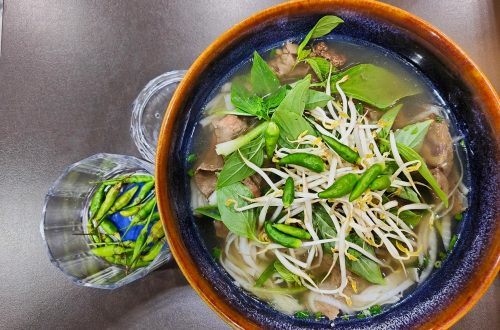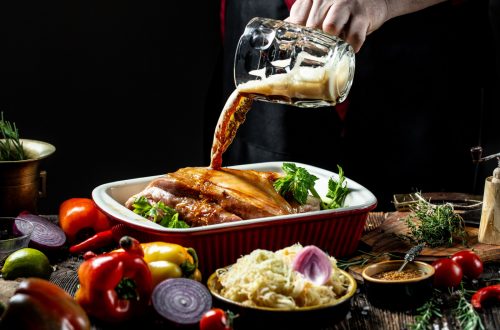
Finding Community in a Cookbook
On a visit back to my childhood home a few years ago, I stopped by Headon’s Fine Meats to say hello to Lyle Headon, a grade-school classmate, whose shop in Creston, Illinois is known throughout the region as having the best meat around. And what should I spy for sale but a copy of a cookbook that had been assembled by the local Methodist church where my grandmother once played the organ. Inside was the collective food story of this farming community – with recipes from my classmates, parents, grandparents, friends, and acquaintances. As I looked through the book, I recognized not only the recipe owners; I remembered that I had eaten meals in many of those homes when I was growing up.
These cookbooks not only offer a historical insight into community kitchens. They also feature recipes that tend to be, for the most part, easy and crowd-pleasing. And I mean crowds. Many of the recipes are for four to six, but they are easily expanded. Lyle’s wife lists a Bar-B-Cue recipe for 25, and another contributor features a turkey casserole to feed 20.
Fundraising
These projects are usually compiled and sold to make money for organizations, from churches to Navy ship reunion committees. Morris Press, which calls itself the number-one cookbook publisher, claims that organizations can earn two to four times the cost of printing the books. Perhaps more important, most doubtless served to bring the community together in a collective effort. And the recipes not only shine a light on what each cook was recognized for contributing to the potluck dinner; they inspire memories that remind us of the good times in the “family” of community.
In the Creston church cookbook, I saw that some contributors took liberties. My grandmother actually took credit for my mother’s recipe for Hershey Squares, and the Women’s Club from my hometown’s Burnt Offerings cookbook features my own recipe for Bourbon Pie with credit going to a family friend. With food combinations, very little is truly original, after all. What counts are the memories.
These days, the Farmboy household has 10 such cookbooks ranging from Charleston Receipts Repeats to the 1963 Unitarian Church of Nashville Cookbook to Fan Fare from the Rochester Philharmonic Orchestra (1981). Locally, there’s Cooking in the Creative Spirit from the First Religious Society (2001) and Recipes of Note from the Newburyport Choral Society (1992). One thing I like about them is that they provide me with ideas for entertaining. I know that the Charleston and the RPO cookbooks are good for appetizer ideas, and The First Religious Society cookbook is good for soups. Several can be relied on for easy, kid-friendly desserts.
Family-raising
My neighbor Marlie Robertson loaned me her collection of 11 community cookbooks she’s collected over the years, ranging from church cookbooks to those published by the real estate firms where her husband worked. She told me that she found them especially useful for satisfying her two growing sons years ago when the family spent weekends skiing in northern New England. The most frequent request by Marlie’s kids was for O’Henry’s Bars, a dessert with a chocolate/peanut butter base like the candy bar. That recipe came from the 1976 cookbook of the First Baptist Church of Tewksbury entitled One Nation Under God. The recipe, by the way, was contributed by Marlie herself.
Now a grandmother, she still swears by some of the recipes she’s discovered – like the 24-Hour Egg Omelet from the United Methodist Church of the Hamptons (NH), a convenient crowd-pleaser. “I make it all the time, with some variations from the original,” she said. “It’s sort of like a quiche. You make it at night, put it in the refrigerator, and then cook it in the morning or whenever you’re ready for it.”
Marlie likes baking, a skill she picked up from her grandmother who lived with the family when Marlie was a girl. Like many of her generation who grew up in the 1920s, her grandmother was an instinctive baker who didn’t have to measure her ingredients.
Over the years, Marlie has incorporated what she learned from her grandmother with some of the lessons she picked up in these cookbooks. One baking secret involves her buttermilk bread that cuts out a lot of the kneading work – just let the dough rise for two hours, punch it down, chill it overnight, and toss it in the oven the next day.
These cookbooks are real treasures – labors of love, with recipes collected and compiled one by one, probably without the benefit of email and self-publishing tools. If you aren’t lucky enough to own a few, why not ask your friends and relatives if they have a copy you could borrow? And if your organization needs a fundraiser, maybe it’s time to resurrect this time-honored tradition. After all, it’s all about community.
How about you? Any favorite recipes that originated from a community cookbook? Are you immortalized in a recipe? Please share your experiences with the rest of us. And let me add a big thanks to Marlie for her invaluable contributions.
To comment, please click on “Read in Browser” or on the headline to view the blog on the website. You can log in and comment at the end of the blog to share your thoughts and start a discussion.
If you’d like to share the blog, click on the Facebook icon or one of the others. Thanks!





One Comment
N. Dori Watanabe
How might I purchase this Methodist cookbook? =) d.